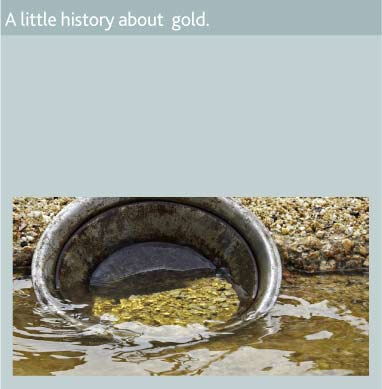
Fool's Gold - Gold 101
Many a prospector, both experts and amateurs, has been taken by fool’s gold. Pyrite, the real name of the mineral commonly referred to as fool’s gold, has a metallic look and color that is very similar to gold. The mineral is often a pale brass yellow or a dull gold hue. Its crystal habit forms into cubic, octahedral, and pyritohedron shapes. These can be striated as well. Whereas gold, which is very soft, can show indentions when bitten into, pyrite is much harder and cannot be scratched, even with a pocketknife.
The word pyrite comes from the Greek word for “of fire” or “in fire.” Many believe the name came about because pyrite makes a spark when hit against a piece of steel or flint. This made pyrite common in early guns.
Pyrite is the most common of the sulfide minerals; it is in fact iron sulfide. Unlike gold it is not a metal. It forms when hydrogen sulfide combines with iron. Pyrite is must harder and more brittle than gold. Also, when it tarnishes it will turn a dark brown color. Pyrite is commonly found in quartz veins, as well as in sedimentary and metamorphic rock. Pyrite can also be found in coal beds and as a replacement mineral in some fossils. Despite its nickname, real gold has been found on occasion with pyrite.
Although fool’s gold has no application as a precious metal, it has been used to make sulfur dioxide commercially. Sulfur dioxide is used in the paper industry. It also has been used in radio receivers before vacuum tubes were fully developed. Because it is attractive, when untarnished, and due to its history of being mistaken for gold, many science museums do display the mineral.
Pyrite has occurred most notably in Illinois and Missouri in the United States. Around the world, large deposits of pyrite have been discovered in Germany, Peru, Russia, South Africa, and Spain. During World War II, pyrite was needed for its sulfur content. When Native American mines in the United States began to dry up, a deposit in Tennessee supplied the necessary mineral for use in industrial purposes.
Next: Gold Prospecting
Sell Gold at BrokenGold™! It's easy, just put your gold in the prepaid envelope and send it to us. You will receive a check 24 hours after we receive your gold. It is that easy! We have gained an excellent reputation on the web and have an ever-growing list of satisfied customers. If you have questions take a look at our Frequently Asked Questions page.
Back to the Gold 101

Gold was first discovered thousands of years ago in its natural state, in streams, which lead to mining all over the world. Its brilliance, natural beauty, great malleability and resistance to tarnish made it enjoyable to work with. Gold gave rise to the concept of money itself. Today gold is used for jewelry fabrication, industrial application, and medical uses, by governments and central banks and by private investors.



Sell scrap gold, silver and have more cash for gold jewelry.
To get started selling gold, fill out the form below.
 |  |
We are a proud member of TRUSTe, Gemological Institute of America, International Precious Metals Institute.

